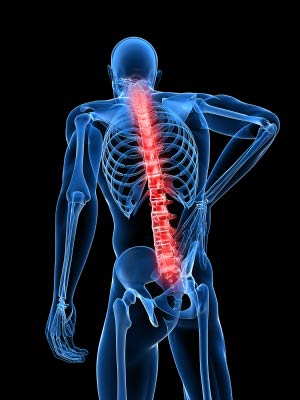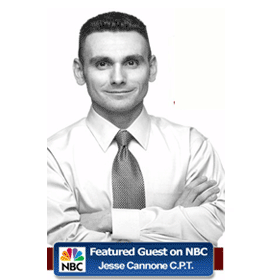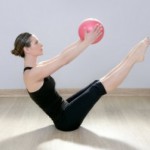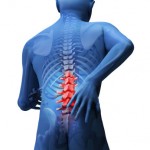Back Pain Relief From Spinal Stenosis
Spinal Stenosis is a disease causing degeneration of the spinal cord bones and tissues, which occurs with age. Those suffering from this ailment can have trouble with their balance and have difficulty in controlling their bowels and bladder while feeling abnormal back pain. To get back pain relief from Spinal Stenosis, it is important to lose weight and keep to regular exercises, which help to strengthen the back and abdominal muscles. Anti-inflammatory drugs are found to provide adequate relief but when the pain is beyond control, surgery is the only alternative. Facet replacement is the extreme therapy in case of extensive Spinal Stenosis according to this article.
Back Pain Relief From Spinal Stenosis
Preventing debilitating spinal conditions such as chronic low back pain before it has a chance to develop is advised
You’re over 50, and when you walk more than a short distance, you get pain or cramping in your legs and lower back. The pain subsides when you sit down. But, you notice the distance you can walk before the pain recurs is getting shorter and when the pain recurs, it is more severe. — You may have spinal stenosis, a narrowing of the spinal column that puts pressure on the spinal cord or a narrowing of the openings where spinal nerves leave the spinal column.
“Stenosis” is derived from the Greek word for choking. If the pressure is on the lower part of the spine, the result is pain or numbness in the legs. If the pressure is on the upper part of the spine, the pain and numbness most likely will be in the neck and shoulders. People with more severe cases may have trouble with their balance and may have difficulty controlling their bladder and bowels.
Spinal stenosis is chiefly a degenerative disease that occurs with age. As we get older, the ligaments of the spine may thicken and calcify, and our bones and joints may enlarge. Stenosis can also be caused by a bulge of the intervertebral discs. There’s not much you can do to keep from getting it.
The odds are you won’t.
Spine surgeon Nicholas Shamie, a spokesman for the American Academy of Orthopaedic Surgeons, estimates that 1.2 million Americans have lumbar stenosis, the most common form. But there are 76 million Americans over 50, so if Shamie’s figure is correct, only about 1.6 percent of seniors have this disease. Risk increases with age and is somewhat greater for women. Genetics plays a role. Some people are born with a more narrow spinal canal.
Risk is also greater for gymnasts, construction workers and others whose jobs or activities put stress on their spines. Although there isn’t much you can do to keep from getting spinal stenosis, there’s a lot you can do to ameliorate its effects.
Perhaps the most important is to lose those extra pounds.
“Being overweight doesn’t help,” said Jack Wilberger, chairman of neurosurgery at Allegheny General Hospital in Pittsburgh. “It certainly puts more strain on the spine and on the back. We are not currently aware of any other thing that would increase the risk of spinal stenosis.”
Exercise can help keep the weight off and is a boon in itself. Exercise that strengthens supporting muscles, including those in the abdomen, can take some pressure off the spine.
Once stenosis has been diagnosed, “We treat conservatively with anti-inflammatory drugs and some physical therapy,” Wilberger said. “That works for about 70 percent. When things get so bad people can’t function in a reasonable manner, then surgery is an option.”
He said that in general up to 80 percent who have surgery get good relief and another 10 percent get some relief.
But patients whose stenosis is more extensive, or who have other conditions, too, may require more complex surgery.
The number of complex spinal surgeries went up by 15 times between 2002 and 2007, according to a study published in the Journal of the American Medical Association in 2010. Some physicians — including the lead author of the JAMA study — think the risks of these surgeries outweigh the benefits.
Neurosurgeons at 30 hospitals nationwide are evaluating a device –the ACADIA Facet Replacement System — that could reduce those risks. Facet joints are small stabilizing joints located between and behind adjacent vertebrae in the spine. They provide about 20 percent of the twisting ability in the neck and the lower back. If they become inflamed, they can cause spinal stenosis.
Spinal Stenosis can have telling effects on a person, especially when it is caused by age. This might be good news if you are young, but old age comes to us all, hopefully. There may be complications associated with this condition that are not very nice, not just suffering from back pain. Losing excess weight and keeping to regular exercise to strengthen the back and abdominal muscles are some measures to get back pain relief from Spinal Stenosis.
Drugs to reduce the inflammation have been useful for bringing relief to back pain in most cases, but when the pain becomes unbearable and out of control, the only option is the facet replacement system, which is required in cases of extensive Spinal Stenosis.
Spinal stenosis causes symptoms similar to other back problems. Dr. Mazza and Dr. Stoll of Coordinated Health TV teach you how to identify your symptoms. They’ll explain what role imaging studies play in identifying stenosis and what options are available to treat your back pain.
How To Stop Sciatica and low back pain from spinal stenosis. In this video Dr. Patrick Snider of The Back Pain Expert discusses low back pain.
Dr. Paul Houle, Neurosurgeon at Neurosurgeons of Cape Cod and Cape Cod Healthcare discusses the fundamental process of Lumbar Spinal Stenosis. This three part series covers the physiology of Lumbar Stenosis, common treatment options, and surgical treatment options.
For more info on back pain – reserve your free copy of The 7 Day Back Pain Cure while copies last. Get your free copy by clicking the get instant access button below.
You might also like:
Tags: Back Pain Relief From Spinal Stenosis, spinal stenosis back pain, Treatment















